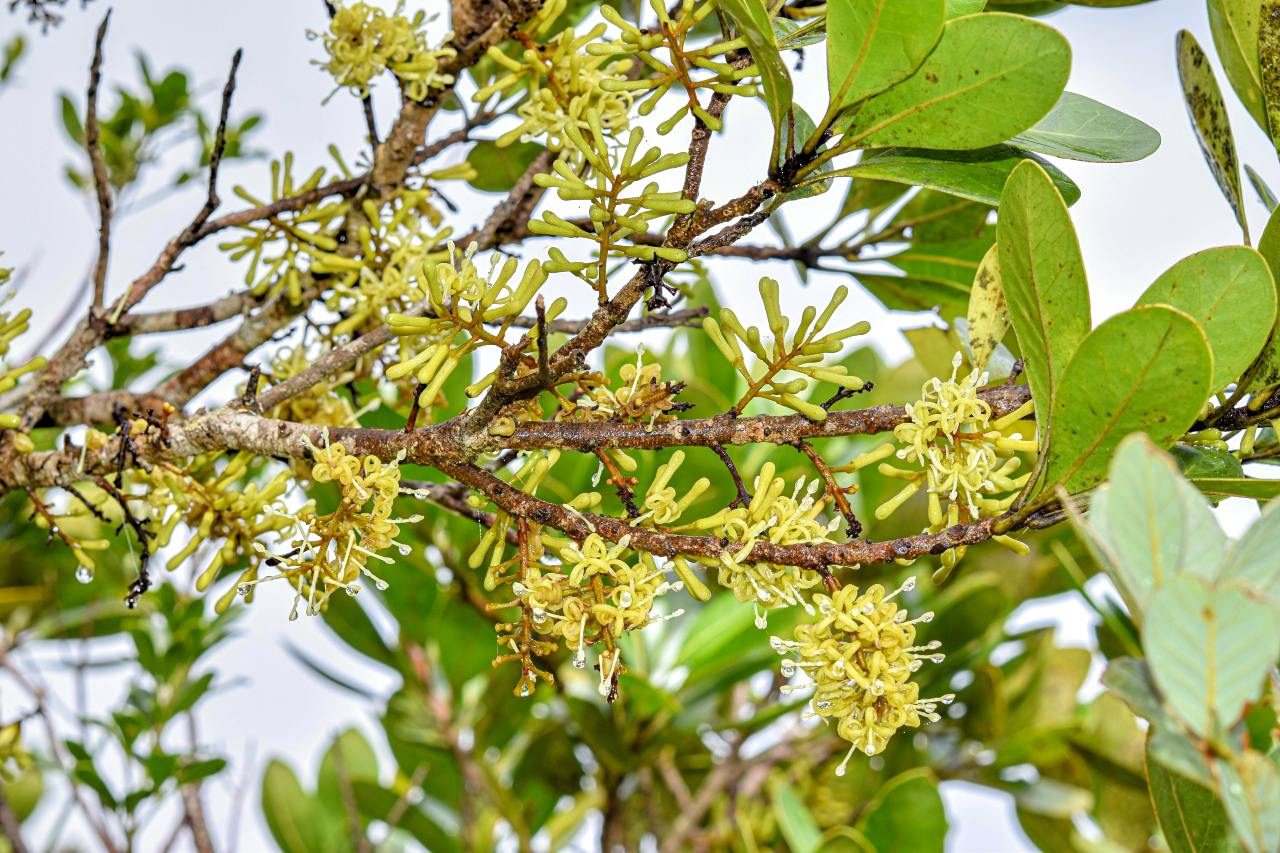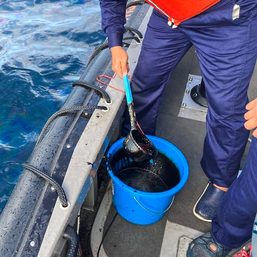SUMMARY
This is AI generated summarization, which may have errors. For context, always refer to the full article.

MANILA, Philippines – On the fourth day of a grueling eight-day floristic survey in July 2019, traversing all of Mt. Mantalingahan Protected Landscape (MMPL) in southern Palawan, the researchers saw a bright yellow flowering treelet belonging to the Proteaceae family, glistening even before the crack of dawn.
It was a newly discovered species they named Helicia danlagunzadii.
“Parang sulit ‘yung pagod kasi [noong] unang beses na makita ko, [I know] it’s a new species,” said Pastor Malabrigo Jr., the first author of the study and a plant taxonomy and forest biodiversity professor at the University of the Philippines Los Baños (UPLB).
(When I first saw it, I felt that all the effort was worth it because I know it is a new species.)
The researchers officially described the new species and explained their process in a peer-reviewed journal article, published in the Philippine Journal of Science (formal publication release in April 2023). The study was led by Malabrigo – also the Museum of Natural History’s curator for trees – alongside fellow UPLB researchers Arthur Glenn Umali, Gerald Eduarte, John Ryan Navidad, and Adriane Tobias.
“Kung mapapatubo natin ‘yan sa isang landscape area o urban parks natin, palagay ko, pagkakaguluhan ‘yan,” Malabrigo said on the possible benefits of the newly discovered species.
(I think the public will be excited about it, especially if we can grow the new species in a landscape area or urban parks.)
The bright yellow flowers covering its leafless branches are a sight to behold, ensuring its huge potential not just for aesthetic purposes but for other ecological services as well.

As a close relative of the macadamia tree, H. danlagunzadii has the possibility of producing economically significant fruits due to the predictive power of classification. Malabrigo explained that this is a scientific concept suggesting that related species are likely to have similar properties.
“Biodiversity is directly related to food security,” Tobias said about the importance of the discovery to biodiversity and resilience.
He added that as more humans discover more species, especially those that are potential food sources, the better stability we ensure in having access to adequate food.
Compared to the other five Helicia species found in the Philippines, the new species is unique for its bright shorter clusters of flowers in a branch or set of branches (inflorescences) at 2.5-3.5 centimeters (cm) (vs. 4-32 cm inflorescences of other Helicia species with relatively darker colors) that are often found in pairs.
This flowering treelet or shrub grows up to 4 meters tall, with oval leaves and bright yellowish florets. It has the smallest maximum height among the Helicia species in the Philippines, based on the study.
The researchers chose the name, danlagunzadii, for the new species in honor of Malabrigo’s mentor, Daniel Lagunzad, who was “a great Filipino systematist and ecologist,” according to the study. Lagunzad worked as a professor at the Institute of Biology of the University of the Philippines Diliman, and was known for inspiring his students toward taxonomy and curing people’s plant blindness.
Challenges
However, the researchers, some of whom are assessors for the International Union for Conservation of Nature (IUCN), have assessed H. danlagunzadii under the critically endangered classification of the IUCN Red List.
Their assessment will eventually be approved and added to the updated IUCN Red List website. They acknowledged the possibility of population decline due to the limited number of the said species found in the identified area – a key biodiversity location. Only three matured H. danlagunzadii were observed during the survey.
Although its habitat remains unspoiled, the species is suspected of being collected for biological use, leading to its possible decline. The said species was discovered during a floristic survey in 2019, as part of the project “Enhancing Conservation Actions in Mt. Mantalingahan Protected Landscape” funded and supported by the Forest Foundation Philippines.
“We have the so-called ‘tragedy of the uncommons’ sa (among) trees. Kapag hindi kilala, walang economic value, hindi alam na sa kanila lang makikita, critically endangered, and then pinuputul-putol lang (If it is unknown, has no economic value, and people are unaware that it can only be found in their area and is critically endangered, would likely be cut down),” Malabrigo explained, as most of the locals replace native plants with their misperceived high-value ones.
With 10 vegetative cover types, MMPL is home to more than a hundred threatened species, and the lack of knowledge of a species makes it difficult to impose existing protection laws. Since H. danlagunzadii is located in the transition zone between mossy forest and sub-alpine forest, as well as along the trek path, the new species is likely to have experienced gathering from both locals and tourists.
Rising hope against biodiversity loss
Collected on July 25, 2019, from the highest mountain in Palawan, H. danlagunzadii is crucial to the biodiversity of the said province and the country.
With Palawan as a biodiversity hotspot, which entails high plant endemism and habitat loss, discovering new species provides hope amid biodiversity loss. Biodiversity is crucial for ecosystem resilience and stability – and, essentially, for human survival.
The researchers highlighted the importance of discovering and naming new species, which is the root of all eventual discoveries about their ecological and economic importance to humans.
They said even the locals do not have a name for H. danlagunzadii, suggesting that it has no specific economic value for them. It strengthens the need for more taxonomists in the country, whom they also called “critically endangered” in the country.
“Napakalaki ng ambag nito, hindi lamang sa Palawan at Pilipinas, kundi maging sa buong siyensya (This discovery has a significant contribution, not only to Palawan and the Philippines but also to science),” Umali said about their discovery and the entire process of naming new species.
Malabrigo suggested both in situ (onsite) and ex situ (offsite) conservation strategies to the government and concerned organizations. As a critically endangered species, it falls under a utilization ban to prevent any illegal gathering and protect these species.
More importantly, he pointed out the need for grant-giving institutions to prioritize biodiversity explorations, especially since the Philippines is a megadiverse nation.
“Unless a species is named, hindi mo siya mapapag-aralan,” Malabrigo reiterated. (Unless a species is named, people will never start to study it for further exploration.)
Future studies
Currently, the researchers have already discovered and published four new species from MMPL alone, with another three still undergoing publication review. They excitedly shared that they also have identified 10 new species for further exploration.
With their upcoming book launch in June 2023, in line with the anniversary of the MMPL proclamation, the researchers are excited about the biodiversity research and exploration possibilities in the country.
With the numerous unexplored areas and species in the Philippines, the researchers encourage young people to experience the exciting life and several perks of being a botanist: going to different places, encountering various creatures, and having a significant contribution to science, all while getting paid for it. – Rappler.com
Add a comment
How does this make you feel?














There are no comments yet. Add your comment to start the conversation.